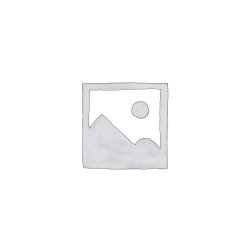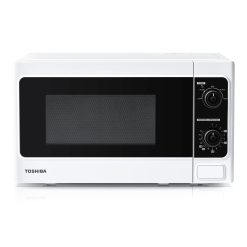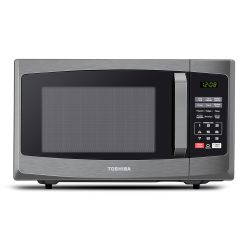Best Price On Ovens
The best price on Ovens. A thermally insulated chamber that is used to heat, bake, or dry a product and is most widely used for cooking. Meat, casseroles, and baked goods such as bread, cake, and other desserts commonly prepared in this manner. In every kitchen today, there is a microwave oven for reheating, baking, or grilling. A microwave oven, however, can aid you in your cooking beyond these requirements. An excellent microwave oven can be used to cook curd, toast nuts, and spices, make perfectly poached eggs, and many other things.
Buying an oven is a significant decision for any homeowner or chef, and it requires careful consideration of several key factors to ensure you select the right appliance to meet your cooking needs and preferences. First and foremost, you’ll want to think about the type of oven that best suits your cooking style. Electric ovens offer consistent heating and known for their reliability, making them a great choice for a wide range of cooking tasks.
Types Of Ovens
Conventional Oven:
Also known as a traditional or radiant oven, it heats food by surrounding it with hot air. It typically has two heating elements (one at the top and one at the bottom) and is suitable for baking, roasting, and broiling.
Microwave Oven:
Microwave ovens use electromagnetic waves to heat food quickly. They are great for reheating leftovers, defrosting, and cooking certain types of dishes. However, they are not ideal for baking or roasting.
Toaster Oven:
A smaller oven that is designed for toasting bread and small cooking tasks like broiling, reheating, and baking small items. They are more energy-efficient than full-sized ovens for small tasks.
Wall Oven:
Wall ovens installed into kitchen walls or cabinets, saving floor space. They come in both conventional and convection variations and can be single or double ovens for cooking multiple dishes simultaneously.
Double Oven:
These ovens feature two separate oven compartments stacked on top of each other or side by side. They are convenient for cooking multiple dishes at different temperatures and often found in larger kitchens.
Steam Oven:
Steam ovens use steam to cook food, making them excellent for retaining moisture and nutrients. They can be used for steaming, baking, and reheating.
Pizza Oven:
Specifically designed for making pizzas, these ovens reach very high temperatures and often use wood or gas as a heat source. They cook pizzas quickly and give them a unique, crispy crust.
Rotisserie Oven:
These ovens have a rotating spit for cooking meat evenly, typically used for roasting poultry and other large cuts of meat.
Dutch Oven:
While not a traditional oven, a Dutch oven is a heavy, thick-walled pot with a tight-fitting lid. It can be used on the stovetop or in an oven and is great for slow-cooking, braising, and baking.
Features Of Ovens
Temperature Control: Ovens offer precise temperature control, allowing you to cook or bake at specific temperatures to achieve desired results.
Cooking Modes: Many ovens come with multiple cooking modes, such as bake, broil, roast, convection, and more, enabling you to prepare various dishes.
Timer and Delay Start: Timers and delay start functions help you set cooking times and start or stop the oven at predetermined intervals, ensuring your dishes cooked to perfection.
Convection Fans: Convection ovens have fans that circulate hot air, ensuring even cooking and browning. This feature is particularly useful for baking.
Preheat Indicator: An indicator light or sound notifies you when the oven has reached the desired temperature, ensuring your dishes start cooking at the right moment.
Self-Cleaning: Some ovens offer self-cleaning features that use high temperatures to burn off food residue, making it easier to maintain a clean oven.
Sabbath Mode: This mode allows you to disable certain oven features for religious observance or special dietary needs.
Smart Technology: Modern ovens often feature smart technology, including Wi-Fi connectivity and compatibility with smartphone apps or voice assistants for remote control and monitoring.
Safety Lock: Ovens may come with a safety lock feature to prevent accidental use or tampering, especially important in households with children.
Benefits Of Ovens
Versatility: Ovens are versatile appliances suitable for baking, roasting, broiling, and more, making them essential for a wide range of culinary tasks.
Even Cooking: Convection ovens and well-designed conventional ovens provide even heat distribution, resulting in consistent and perfectly cooked dishes.
Time Efficiency: Ovens can cook multiple dishes simultaneously, saving time in meal preparation, especially when entertaining guests.
Energy Efficiency: Well-insulated ovens and efficient heating elements contribute to energy savings compared to alternative cooking methods.
Preservation of Nutrients and Flavor: Steam ovens and low-temperature cooking options help preserve the natural flavors and nutrients in food.
Convenience: Timers and delay start functions allow for hands-free cooking, and smart ovens offer remote control and monitoring capabilities for added convenience.
Safety Considerations Of Ovens
Child Lock: Use the safety lock feature to prevent accidental oven use, especially if you have young children at home.
Burn Prevention: Ovens get very hot during use. Always use oven mitts or pot holders when handling hot dishes or pans. Keep flammable materials away from the oven.
Ventilation: Ensure that your kitchen is adequately ventilated to remove heat and odors generated by the oven. Use the oven’s exhaust fan or open windows if necessary.
Cleaning: Regularly clean the oven to prevent the buildup of food residues, which can create smoke and unpleasant odors during cooking.
Positioning: Install wall ovens at a comfortable height to minimize the risk of burns and make it easier to access dishes.
























